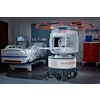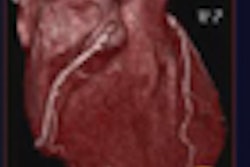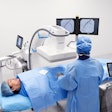
NEW YORK (Reuters Health), Jan 8 - Symptomatic patients with and without colorectal cancer can be distinguished on the basis of antibody profiles, researchers in Ireland have found.
As they report in the January issue of Gut, they used high-density protein arrays to characterize antibody profiles in patients undergoing colonoscopy. Serum samples from 43 patients found to have cancer and 40 without neoplasms were profiled on a 37,830-clone recombinant human protein array.
Ultimately, they identified a "12-antibody signature" that differentiated between patients with and without colorectal cancer with 80% specificity and 83.7% sensitivity.
Co-author Dr. Jochen H. M. Prehn of the Center for Human Proteomics, Royal College of Surgeons, Dublin, and colleagues outlined their study:
- Initial profiling in the 83 subjects identified 19,645 clones.
- Analyses of serum samples from a training set of 20 of the cancer patients and 20 controls identified 43 cancer-associated antigens and 9 antigens "associated with non-cancer."
- Extending the training set to include all patients and controls led to the identification of 18 markers for cancer and 4 "anti-markers for absence of cancer."
- Finally, expression of the antigens was confirmed in tissue.
Several well known tumor markers were represented in the antibody signature, including p53, high mobility group B1 (HMGB1), tripartite motif-containing 28 (TRIM28), transcription factor 3 (TCF3), longevity assurance gene homologue 5 (LASS5), and zinc finger protein 346 (ZNF346).
"The finding that several known antibodies identified in this study were previously described in other cancers shows that many of the pathways of tumorigenesis may be shared by different cancers," the investigators said.
They point out that while p53 antibodies were correlated with Dukes stage, other antibodies were found at all stages of cancer.
"In summary, we show for the first time that screening serum from symptomatic patients with large protein arrays identifies both known and new antibodies that many have a role in the diagnosis and treatment of patients with colorectal cancer," the authors conclude.
Gut 2010;59:69-78.
Related Reading
Lesion size and morphology at VC good predictors of histology, December 22, 2009
Copyright © 2010 Reuters Limited. All rights reserved. Republication or redistribution of Reuters content, including by framing or similar means, is expressly prohibited without the prior written consent of Reuters. Reuters shall not be liable for any errors or delays in the content, or for any actions taken in reliance thereon. Reuters and the Reuters sphere logo are registered trademarks and trademarks of the Reuters group of companies around the world.


















